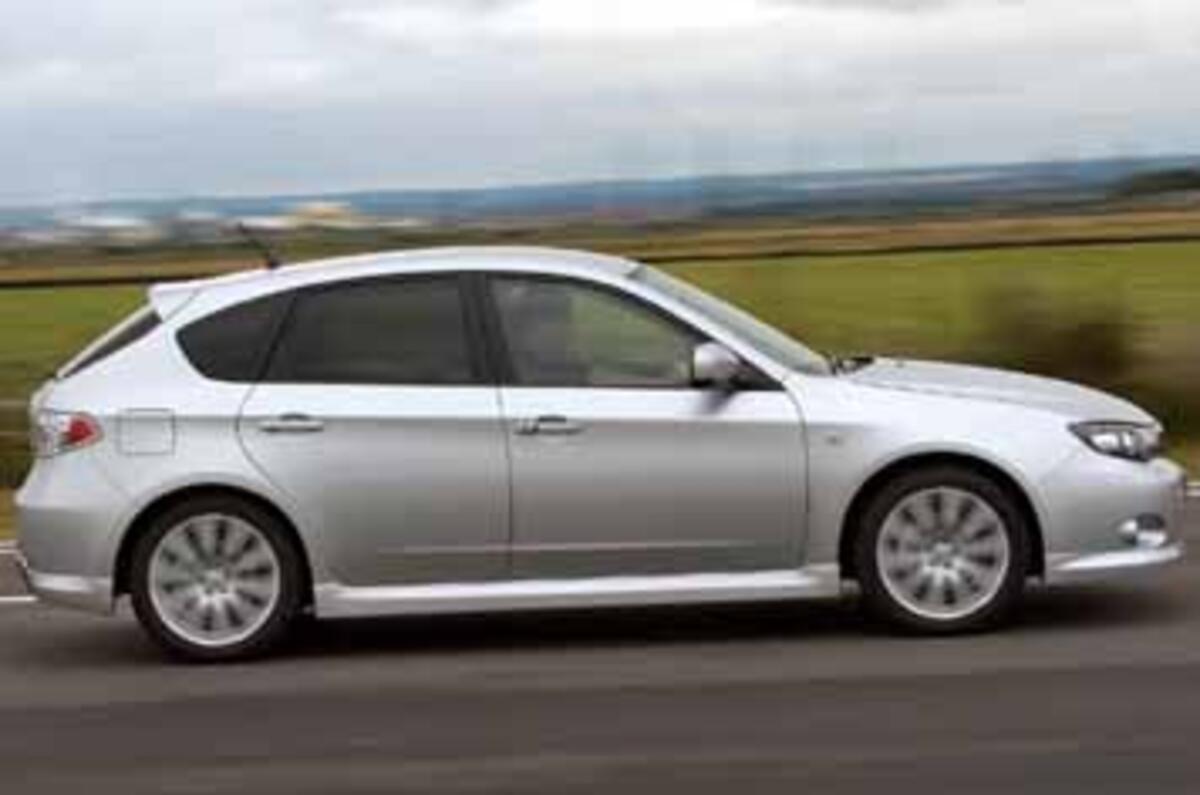What is it?
This is the totally new Impreza. It's claimed to have a roomier body, new multi-link rear suspension, better fuel economy and torquier, more flexible engines. Subaru wants to break the Impreza brand out of its comfort zone as a high-performance road car.
The project started out with non-turbo customers in mind. That's why the sports estate look was ditched for a conventional hatchback layout. Styling and 'functionality' were put to the top of the Subaru engineers' wish list.
Compared to the outgoing model, the front and rear overhangs were shortened, the wheelbase lengthened by nearly 90mm and whole car widened by around 45mm. Subaru's trademark frameless doors have also been dropped.
Full-time all-wheel drive is standard, as is a low-ratio gearset, climate control, the full compliment of airbags and useful touches such as front fog lamps and a trip computer.
What's it like?
It's hard to be totally definitive. The road test cars had just 1200 miles under their valve springs and Subaru's flat four engines are notoriously tight when new.
But with 148bhp on tap, the 2.0-litre Impreza had no immediate performance worries even in its out-of-the-container state. With another 5000 miles on the clock it could become much brisker still.
It does, though, suffer from having a five-speed 'box with a lowish top ratio turning at just 20.9mph per thousand. A six-speed box would be a big improvement. Either way, thanks to a chassis that could handle 250bhp and more at a lick, down-the-road performance is predictably mild.
Once rolling, however, the Impreza could be made to travel along with some fluidity. This is a car, which demands some thought and rewards a driver who is prepared to watch the road ahead and set the car up accordingly.
The new Impreza - when cruising at least - is refined and easy-going. It's also noticeably more fluid and languid than the outgoing car. The brakes are strong and the climate control is excellent.
It's also more refined (both in terms of engine noise and suspension feedback) but doesn't encourage apex clipping. In that sense, the new Impreza does have much more mainstream appeal, but it still has a very distinct flavour.
The plain-Jane exterior styling seems to lack a final polish of sophistication and the rear lights are plain garish. However, the car's looks are immeasurably improved with the sill extensions, front spoiler, a cutaway rear bumper and 17in wheels fitted to the 2.0-litre RX model.
The new interior is a step forward. Perhaps not Golf quality (and we managed to scratch the glovebox lid quite easily), nor anywhere near as innovative as the Honda Civic, but it can hold its own and president suggests it will be robustly screwed together.
Rear space and shoulder room is much improved, but the car didn't feel as spacious as a Golf or Civic.
Should I buy one?
In its plain wrapper, the 2.0 Impreza costs £14,995, though you also get 16in wheels, Vehicle Dynamics Control and xenon lights added to the entry-level spec. By the time you add the desirable body kit, the price jumps to £17,495, though sat-nav (incorporating a superb stereo) is standard on the 2.0RX.













Add your comment